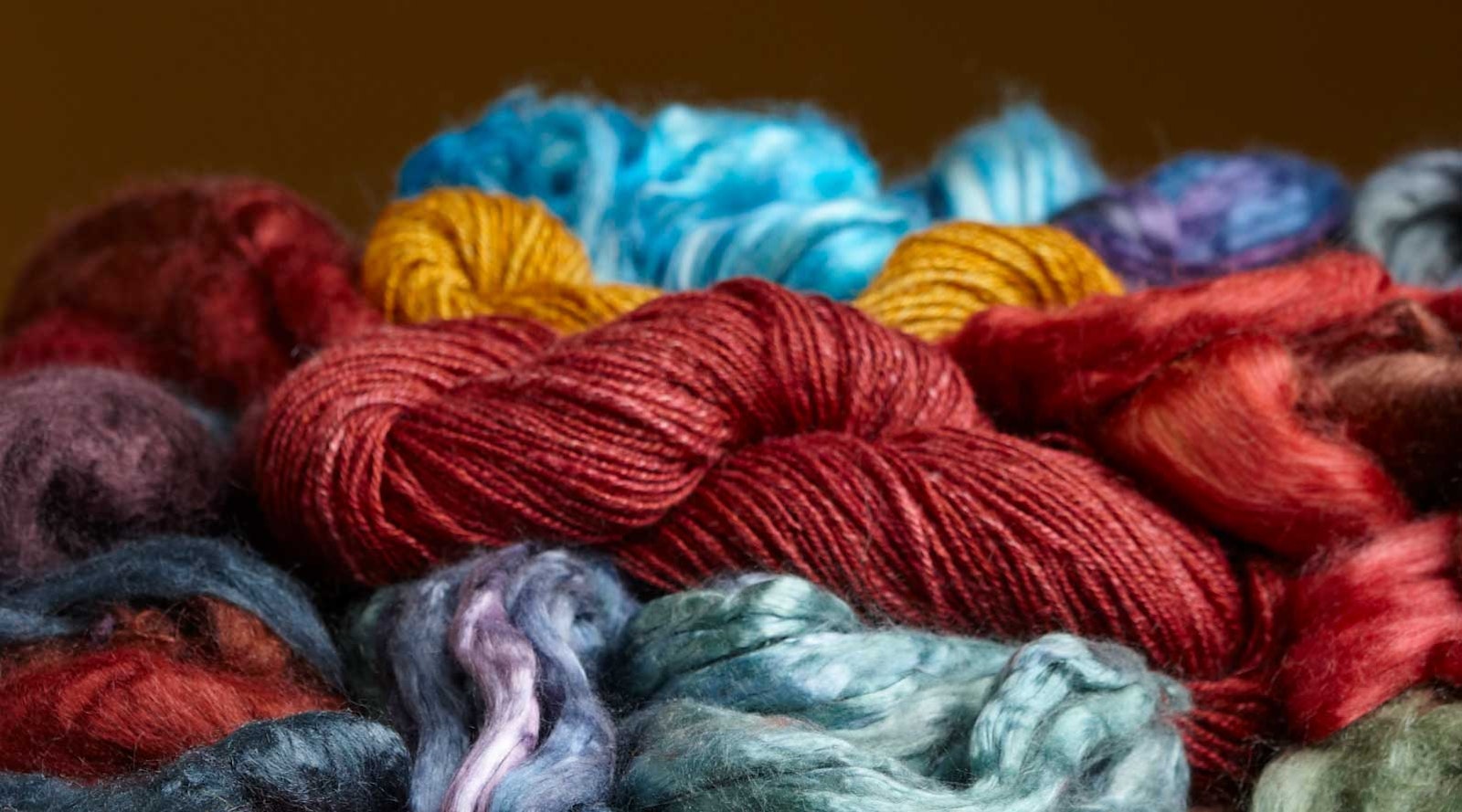Silk. The word itself conjures an image of rich color, shiny surfaces, and supple fabrics. As spinners, working with silk fiber gives us the opportunity to be a part of those images: as the fibers drift through our fingers, and as we imagine the beautiful fabrics we will make.
Silk is not wool!
Spinning silk is not difficult, but you will be more successful if you remember this: spinning silk is more like spinning cotton than it is like spinning wool.
The fibers have no scales or crimp like wool. They will not full or felt in the finishing process, as either yarn or fabric. There is no grease or lanolin and no sericin on the surface of the fiber to help hold the fibers together in drafting.
Photo by Beth Macdonald via Unsplash.
Add more twist.
Twist is the only thing holding the fibers in the yarn. Like cotton, the finer the yarn and the more twist you insert per inch, the more stable your silk yarn will be. A loosely twisted yarn may appear more lustrous, but will fuzz and degrade in the process of making and use. Without twist, the fine fibers will slip against each other and pull out of the yarn, forming fibrils or pilling on the surface of your yarn and eventually your project.
Silk fibers are very fine, from Bombyx (which ranges from 10 to 13 microns in diameter) to Tussah (from 20 to 30 microns). Cotton fibers range from 13 to 20 microns but are much shorter than most silk fibers we spin.
As with spinning cotton, silk fibers will draft out of any mass of fiber in your hands. Hold the fibers very lightly, have your wheel set to a very slight tension, and let the twist help draft the fibers, whether you spin from the end of the top, from the fold, or from a loose mass of fibers like the laps or batts of Muga and Eri silks we see on the market.
Photo by Stu X via Pixabay.
A satisfying fabric.
Silk spun fine, with a tight twist—used as either singles or plied to any size you wish—will make up into durable and shiny fabrics. The fabrics will wear well, remain lustrous and smooth, and will last for years of use, making the hours you spend spinning and then weaving, knitting, or embroidering your handspun silk well worth the effort.
Sara Lamb is well-known for her colorful handspun silk. Her DVD Spinning Silk, available in the Long Thread Media shop or via an all-access subscription, contains even more practical knowledge for working with this lovely fiber.

